VIET-NAM

|
|
||||||||||||||||||||||||||||||||
|
On the territory of today’s Viet-Nam An Nam became independent from China in 1428 when a notable land owner in the Lam Kinh region
called Lê Lợi (r.1428–1433), rebelled against the
Chinese Ming regime. Following his victory he ascended the throne and
established himself in Thang Long [1]. His dynasty,
the Lê Dynasty
would rule An Nam from 1428 until 1786. The empire slowly expanded to the south but in 1527 it was divided in two parts, the North, called Tunquin being ruled by by kings from the Mac- and later the Trinh Dynasty, the South being ruled by kings of the Nguyen Dynasty. Soon, the Lê emperors became nominal rulers, both kings in fact ruling their parts of the empire as heads of state. In 1802 Tonkin and Annam were united by Nguyen Phuc An who
in 1806 called himself Emperor Gia Long. |
|
|||||||||||||||||||||||||||||||
|
Cochin-China
(Saigon) in the south was captured by France in 1859. Tonkin and Annam
followed in 1874-’85. In 1887 these territories were united with Cambodia,
captured in 1860-’67, and Laos, captured 1886, into the Indo-Chinese Union, founded
1887. In this union the emperor of Đại Nam, together with the kings of Laos and Cambodia was under
French protection. In 1940 Vietnam
was occupied by Japan. Following the capitulation of Japan in 1945 the country
was divided again in a northern and a southern part. Socialist
Republic of Vietnam 1976-present South
Vietnamese who opposed Diem’s rule and desired the reunification of Vietnam
under the Hanoi government of Ho Chi Minh organized the National Liberation
Front, better known as the Viet Cong. Supported and later directed by the
People's Army of Vietnam (PAVN) in the North, they would launch guerrilla
attacks in the South against Army of the Republic of Vietnam (ARVN) military
targets and, later, American troops. The massive
1968 Tet Offensive was a military defeat for the Viet Cong but a stunning
political victory, as it led the U.S. to view the war as unwinnable. With the
Paris Peace Agreement of 1973, American military forces withdrew from Vietnam.
Despite the peace treaty, the North continued the war, and defeated the South
in April 1975. In 1976, Vietnam was officially reunited under the current
Vietnamese government as the Socialist Republic of Vietnam. The Changing Names During the
period of Chinese domination, Vietnam was called An Nam by Chinese
rulers (which means Pacified South). When Viet-nam broke free, it was called Đại
Cồ Việt, Đại Ngu or Đại Việt.
In 1802, Emperor Gia Long requested the Qing Empire to allow his country to
be known as Nam Việt. To prevent confusion with Triệu Đà's
ancient kingdom, the Qing Manchu Chinese Emperor reversed the two words to Việt
Nam. In 1838, during the Nguyen Dynasty, the nation's name was changed
temporarily to Đại Nam. During the French colonization, Vietnam
was divided into: The protectorate of Tonkin (Bắc Kỳ or
North Vietnam), the protectorate of Annam (Trung Kỳ or Central
Vietnam), and the colony of Cochin China (Nam Kỳ or South
Vietnam). |
||||||||||||||||||||||||||||||||
|
|
||||||||||||||||||||||||||||||||
|
|
||||||||||||||||||||||||||||||||
|
The heraldic system of the Lê and Nguyen emperors of Viet Nam resembled the heraldic system of the Chinese Ming and Qing emperors. Like in China the sun and the moon symbolized the empire and the state. Dragon and phoenix symbolized the sovereign and the head of state. Also, achievements and mandarin squares of Chinese design were used. |
||||||||||||||||||||||||||||||||
|
The emblem of the Empire was a sun. This was of Chinese shape of a flaming disc and is known in Vietnamese context from the 11th century AD. In the early years of the Nguyen empire a sun with pointed
rays was preferred. This form of a sun is of very ancient origin in Vietnam.
It occurs on bronze drums from the last centuries BC, not
only in Vietnam itself but also in the north of the surrounding
countries Shields with such suns are
also known from the 19th century and this suggests that there was an
uninterrupted tradition of this form of sun in Vietnam.
Coin of Minh Mang (1820-1841).
Shield of
wickerwork with sun pattern, 19th century. (Musée d’Angoulème, collection Jules Lhomme) At the same time a sun of Buddhist origin was used. This consists of a red disc surrounded by a halo of flames.
By emperor Gia Long and his successors a red sun was adopted as the emblem of the empire. This sun is depicted in Hué, the imperial residence on several places. It consists of a red disc enveloped in flames and surrounded by some claouds. These kind of suns date from early Chinese history and the sun illustrated here is from the time of Minh Mang (1820-1841).
|
||||||||||||||||||||||||||||||||
|
The emblem of state was also in two forms, the first of apparently Chinese origin, the second of Buddhist origin. On coins there is a sun on the obverse and what may be a sun and a moon surrounded by five stars on the reverse:
Coins of Minh Mang and ThieuTri showing a sun and a moon and five
stars, surrounded by clouds.
One tien of Thieu Tri, 1841 Another, more common symbol of the state was a version of the yin-yang symbol, itself a symbol of the moon, uniting the two sides of the moon: a full moon and a new moon. In that form it is also on early 19th century coins. |
||||||||||||||||||||||||||||||||
|
Five tien piece of Thieu Tri, 1841-‘47 An emblem that may be called a national emblem is on coins from the time of the sovereign Empire. It consists of a moon, a sun and five stars, surrounded by some clouds. Below is a version of the mountains-and-shore emblem symbolizing the earth. [2] |
||||||||||||||||||||||||||||||||
|
Moon, Sun, Stars, Clouds State, Empire, Rulers, Heaven. |
Mountains-Shore-Trees-Cascade Earth |
|||||||||||||||||||||||||||||||
|
|
||||||||||||||||||||||||||||||||
|
The emblem of the Emperor was a Chinese dragon. This imperial beast was applied amongst others on imperial edicts, on the imperial official dress, behind the imperial throne and on coins. From the end of the 16th century there is a tile showing a dragon, and this is undoubtedly the emblem of an emperor, probably Lê The Tông (1573–1599) or Lê Kinh Tông (1600–1619) of the Ly-dynasty.
Dragon on 16th-17th c. terracotta tile 27 Í 27 cm. Koninklijke Musea
voor Kunst en Geschiedenis, Brussel. Inv. H. 506.
Imperial edict, 1841-’47. Showing a dragon passant, the imperial seal and the text ‘Obey this Order’. In the early years of the Empire the imperial dragon was depicted facing to the dexter and keeping the yin-yang (moon-) symbol. In later versions the dragon is guardant. This is also the attitude of the dragon behind the throne. It matches the dragon on the Qing imperial robes. Both versions are the emblems of the sovereign |
||||||||||||||||||||||||||||||||
|
Coin of Minh Mang (1820-‘41). Dragon to the dexter |
Coin of Thieu Tri (1841-’47) Dragon guardant |
|||||||||||||||||||||||||||||||
|
Throne Hall in the Imperial Palace in Hué Behind
the throne a full colour dragon guardant The imperial
dragon served also as the handle of the imperial seal: |
||||||||||||||||||||||||||||||||
|
Seal of Gia Long |
Seal of Minh Mang |
|||||||||||||||||||||||||||||||
|
More on these and some other
imperial seals: http://carnetdephilippe.canalblog.com/archives/objets_en_or__vietnam_/index.html). |
||||||||||||||||||||||||||||||||
|
The Achievement of the
Empire |
||||||||||||||||||||||||||||||||
|
Imperial achievements Chinese style are known from Vietnam from the 11th century AD and later they were used throughout the Lê and Nguyen Empires. They consist of a flaming sun supported by two dragons, of which examples are known from the 11th and 13th century Chinese Sung-dynasty rule in Vietnam. [3]
Stone ornament with
achievement,
1057 AD. From Phat Tich Temple.
Museum of History of Vietnam, Hanoi. Inv. n° LSb 22275. The stone shows a floral device, probably a lotus-flower
and two suns radiant supported by two dragons. The meaning of this
achievement is unclear but it may be the achievement of the Dai Viet-administration
of Lý Thánh
Tông (1054-1072). |
||||||||||||||||||||||||||||||||
|
Wooden doors with carved dragons and flaming sun-emblem. 13th century 190 Í 141 cm. Museum of History
of Vietnam, Hanoi. Inv. nr. LSb21239 a,b. The floral device below
probably the device of the Tran Dynasty |
||||||||||||||||||||||||||||||||
|
Stele to the memory of the
works of and
the building of the Thieu Mu Pagoda at Hué, 1715. [4] Showing the emblems of the
Ly-dynasty. The achievement of the Nguyen Empire was a sun supported by two dragons, identical to the earlier Lê achievements. It was applied in many places of the citadel of Hué, on the canopy of the throne and on the ridges of buildings. Æ See reconstruction in the head of this essay |
||||||||||||||||||||||||||||||||
|
Achievement of
State |
||||||||||||||||||||||||||||||||
|
The achievement of state differs from the achievement of the empire in that the sun is replaced by a moon. An ancient example is on a woodcarving from the Tran dynasty (1225-1400), showing a floral device supported by two dragons. Apparently the floral motive represents a lotus, the symbol of hindu-buddhist administration. It is depicted seen from the side like in the hand of Hindu sculptures of Vishnu. The moon is depicted in the Chinese fashion, the crest representing a cloud.
Woodcarving in the
Thai-lac Temple in Hanoi, Tran-dynasty (1225-1400) |
||||||||||||||||||||||||||||||||
|
Much later, the moon was depicted as a disc and the lotus-flower as a crown of leaves:
Cabinet doors in a
Buddhist temple in Cao Bang province, 17th century. Carved with a moon-lotus achievement. |
||||||||||||||||||||||||||||||||
|
Huc, bridge of the rising sun, ......often called ‘Seat of the Morning Sun’ build in 1855 to connect the eastern bank of the “Lake of the restored Sword” with the Temple-island in Hanoi. It shows an achievement of a moon supported by two phoenixes which could be the emblem of the government, the phoenixes being the emblem of the head of state. Probably this is the achievement of State. Later versions of the achievement of state however, consist of a moon or yin-yang symbol supported by two dragons. This implies that the emperor (the sovereign) was also the head of state. A version of such
an achievement was on the caps
of high-ranking Vietnamese officials. |
||||||||||||||||||||||||||||||||
|
Lower part of the frame around a portrait of Khai dinh (1916-’25) It repeats an achievement
of a moon or ying-yang symbols supported by two dragons passant. This achievement symbolizes the Imperial Government, the dragons being the emblem of the emperor. This matches about a political situation of the Protectorate of Vietnam where the french National Assembly (that is: the French people) was the sovereign, the Vietnamese emperor merely being the head of state. |
||||||||||||||||||||||||||||||||
|
Apparently in the Lê-era the symbol of the armed forces was a flaming sun of Chinese design. This can be be seen on the sculptures of two Viet generals from the 16th cenury and on a cannon cast by the dutchman Kylian Wegewaert for the war between the Nguyen and the Trinh dynasties of the south and the north. It implies that the Armed Forces were a function of the Empire, which was symbolized by a sun. |
||||||||||||||||||||||||||||||||
|
Flaming sun hat-badge of a
Viet general. 16th century Museum of Art of Vietnam.
Hanoi. Inv. nr. 131 DK 324a3 |
Flaming sun emblem on a
cannon. Made by the dutchman
Kylian Wegewaert, 1640. [5] |
|||||||||||||||||||||||||||||||
|
In the Nguyen-era the
emblem of the armed forces was a lotus-flower charged with a moon. This can
be seen on the hat-badges which were common for all,
the military as well as the civil, officials. It implies that the civil and
military services of the empire were both a function of the state and, in
particular, of the administration of the State.
Cap badge of Military and Civil officials. 19th
century [6] Such a moon was
also on the shields of the army as can be seen on this picture
of the execution of a Jesuit priest in 1838. On this picture
there an impression of some of the uniforms of the army is also given. |
||||||||||||||||||||||||||||||||
|
Judge and soldiers attending an execution, 1838. Detail from “The Martyrdom
of St. Pierre Borie”. In the center of this picture an ensign bearer, holding an umbrella and a shield charged with a full moon. On the left a high-ranking official on an elephant sheltered by another umbrella.. |
||||||||||||||||||||||||||||||||
|
Imperial Guard |
||||||||||||||||||||||||||||||||
|
Less sure we can be about the meaning of the sun on a shield, preserved today in the Museum of the Municipality of Angoulème (Fr.) This shows a floral motive charged with a red sun. Probably, as it
suggests that the armed force was a function of the empire, it has belonged
to the Imperial Guard. Of this Imperial
Guard a badge is preserved from later times, but certainly from the time of
the Protectorate. It shows a device consisting of a sword per fess charged
with the remparts of the Citadel of Hué inscribed with Chinese characters and
supported by a single dragon. |
||||||||||||||||||||||||||||||||
|
Shield with an Annamese (Chinese) sun. (19th century. Musée d’Angoulème, collection Jules Lhomme) |
Badge of the Imperial Guard showing the name of the country in Chinese characters as on the flag of 1870-‘90 |
|||||||||||||||||||||||||||||||
|
Probably, but we are not sure either, the achievement of the Imperial Guard consisted of a dragon’s head (a symbol of the Supreme Commander) supported by two dragons passant (symbols of the Emperor). Such achievements can be found on several places in the Citadel of Hué.
Arms of
Annam In a Vichy-France publication, 1941 [7] |
||||||||||||||||||||||||||||||||
|
1940-1945 |
||||||||||||||||||||||||||||||||
|
On 5 September
1940 the South China Front Army of the Imperial Japanese Army organized the
amphibious Indochina Expeditionary Army to move into Indochina. Faced with this
invasion threat, Vichy France yielded. On 22 September, Japan and Vichy
Indochina signed an accord which granted Japan the rights to station troops
in Indochina, and to move troops and supplies through Indochina. On 26 September
1940 the 5th Division of the Imperial Japanese Army nevertheless occupied
Vichy Indochina. An Indochina
Garrison Army (印度支那駐屯軍, Indoshina Chutongun) was formed on 9 September 1942 under
the Southern Expeditionary Army Group
(南方軍). On 12 November 1944, the Indochina Garrison Army was re-designated the
Japanese 38th Army (第38軍). This army was involved in the Second French Indochina Campaign
of March 1945, which resulted in the proclamation of the Empire of Vietnam (Đế quốc Việt Nam) independent from
French rule, on 11 March 1945. The flag of the
Japanese Imperial Armed Forces was a red sun radiant on a white cloth. The
cap-badge of the Army was a five-pointed star, faceted for officers and plain
for lower ranks. |
||||||||||||||||||||||||||||||||
|
A flag for the Empire was adopted on 10 March 1945
and showed three red stripes, the second interrupted, on a yellow cloth. The
stripes are the Buddhist trigram for West (i.e. of Japan). The state was
abolished on 23 August, after the Japanese 38th Army was demobilized at the
surrender of Japan on August 15, 1945 at Hanoi. |
||||||||||||||||||||||||||||||||
|
|
||||||||||||||||||||||||||||||||
|
|
||||||||||||||||||||||||||||||||

© Hubert de Vries 2012-02-21; Updated 2015-07-06
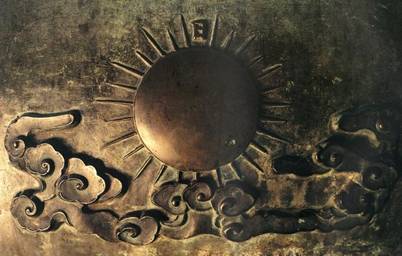

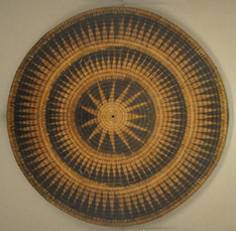

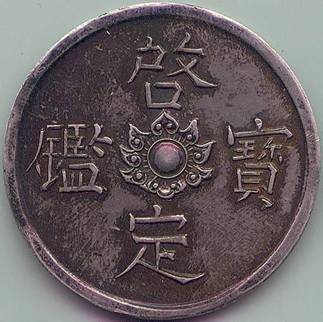
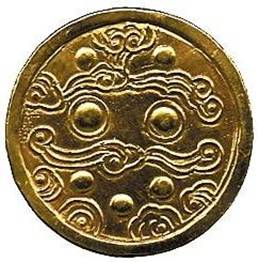

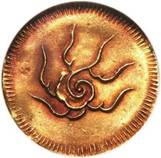
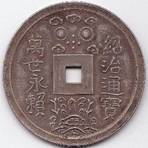
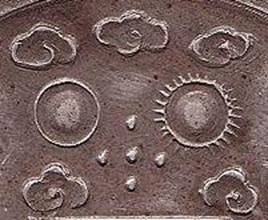
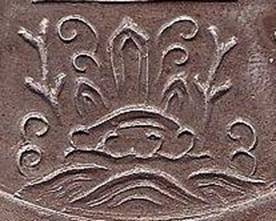
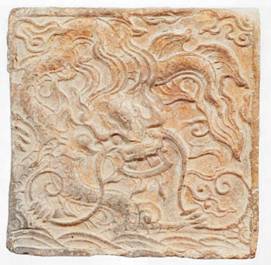
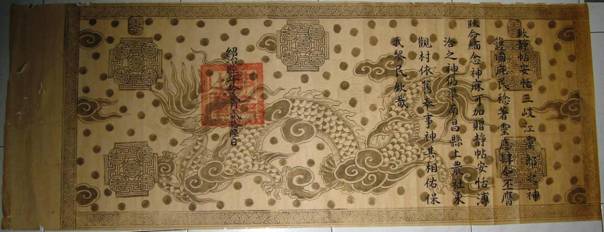
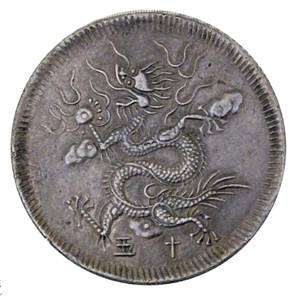
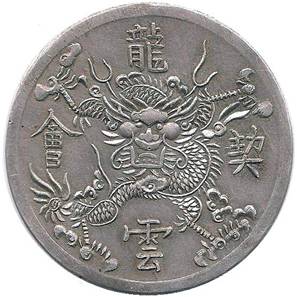

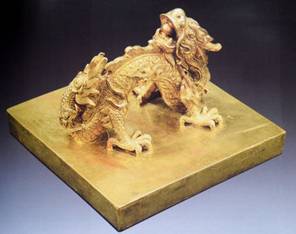
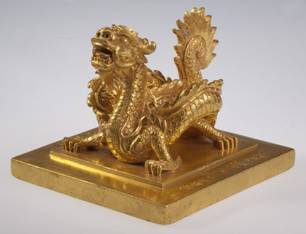
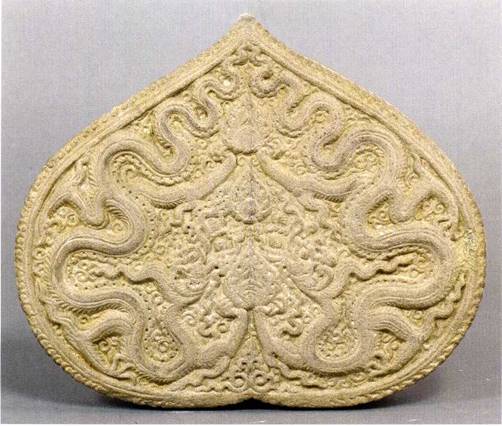
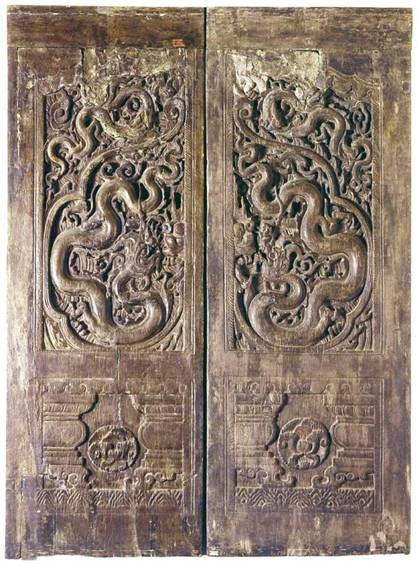
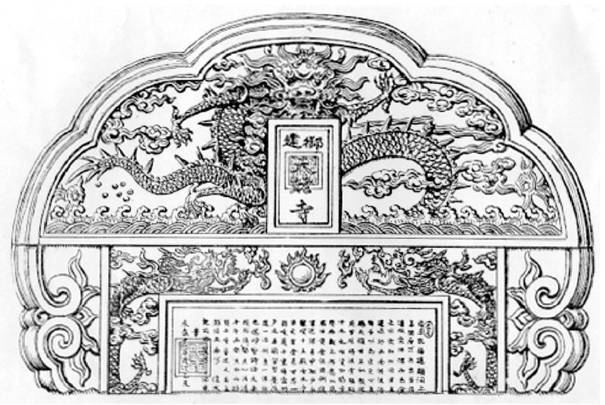
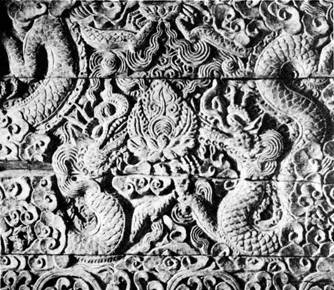
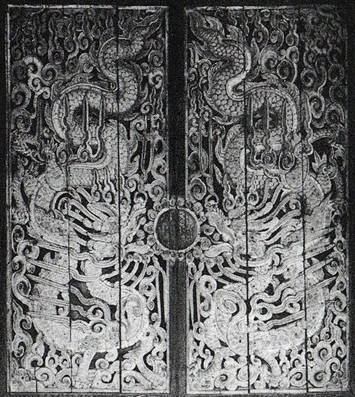
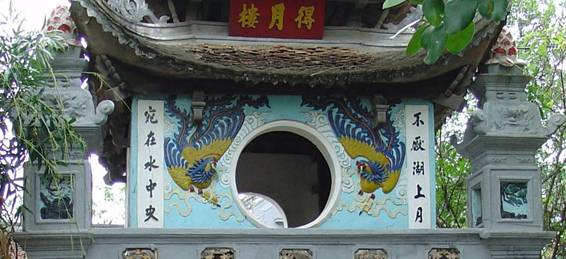
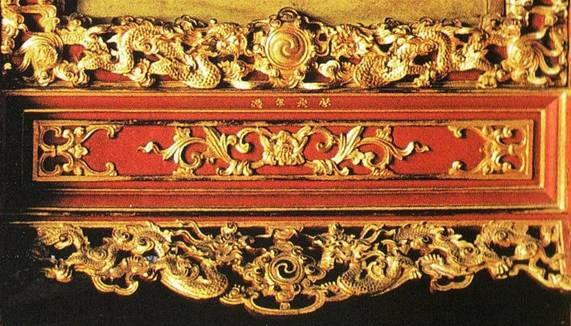
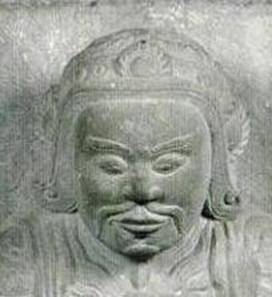
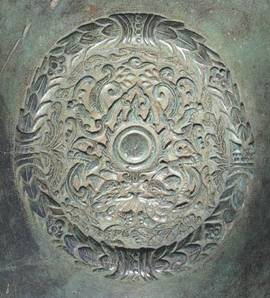
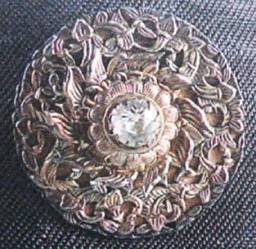
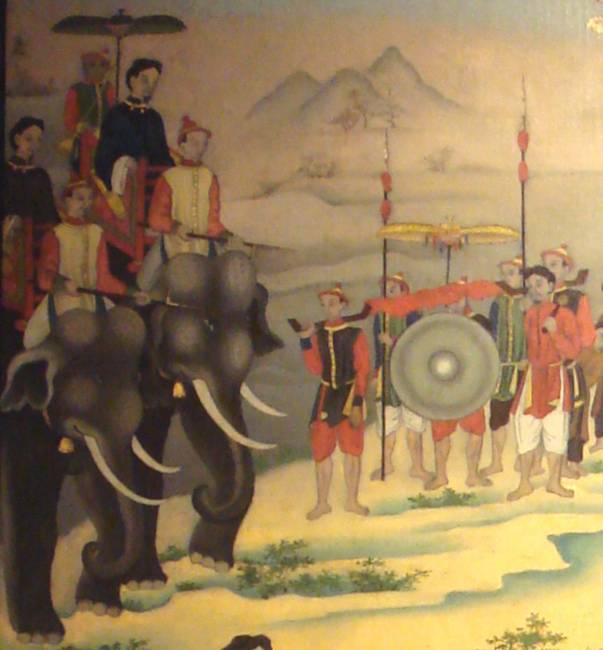
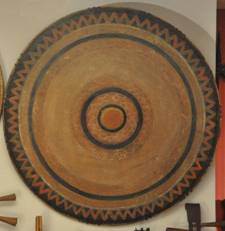
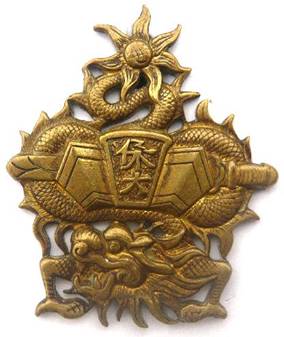

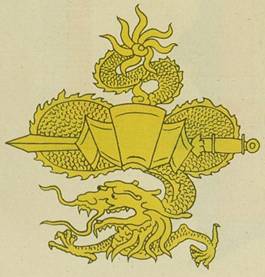
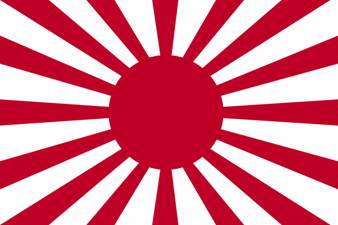
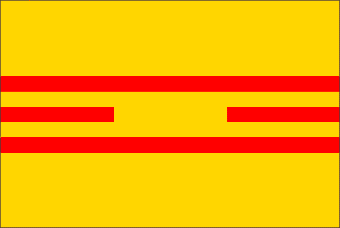
 Heraldry of the World
Heraldry of the World